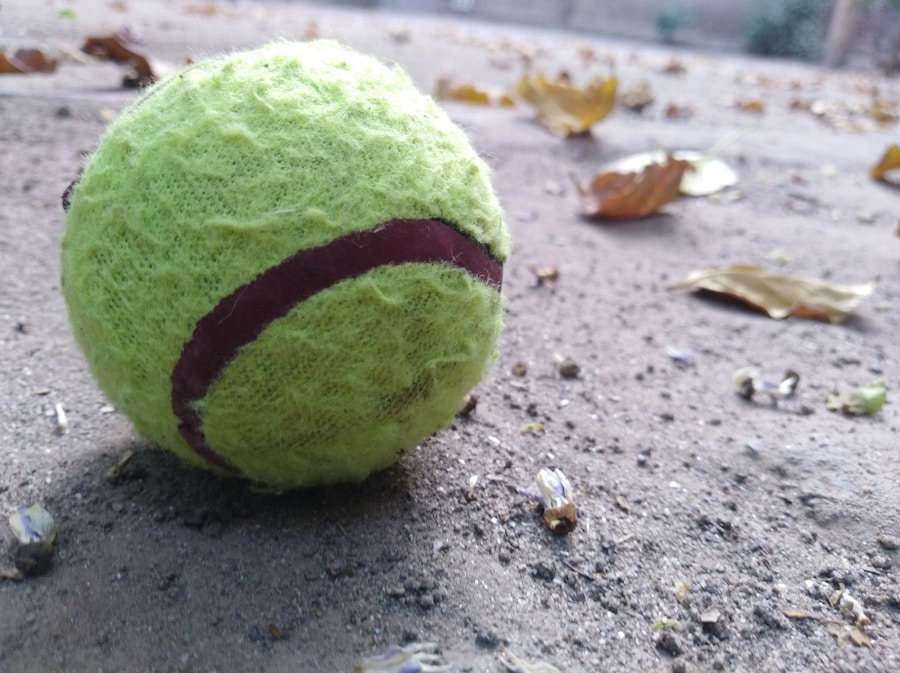Download links
How to install The Science Behind the Bouncing Ball APK?
1. Tap the downloaded The Science Behind the Bouncing Ball APK file.
2. Touch install.
3. Follow the steps on the screen.
Description
The phenomenon of bouncing is a captivating interplay of forces and energy, governed by the principles of physics.
This interaction can be analyzed through the lens of Newton’s laws of motion, particularly the second law, which states that the force acting on an object is equal to the mass of that object multiplied by its acceleration.
When a ball strikes the ground, it experiences a rapid deceleration as it compresses upon impact, followed by a swift acceleration in the opposite direction as it rebounds. This process is not merely a simple back-and-forth motion; it involves complex interactions between kinetic energy, potential energy, and the forces exerted by both the ball and the surface. The height to which a ball bounces is influenced by several factors, including its initial velocity, the angle of impact, and the characteristics of the surface it strikes.
For instance, a basketball dropped from a height will bounce higher on a hardwood court than on a grassy field due to differences in surface hardness and energy absorption. The physics of bouncing can also be illustrated through experiments involving different types of balls—such as rubber balls, tennis balls, and golf balls—each demonstrating unique bouncing behaviors based on their material properties and design. Understanding these principles not only provides insight into everyday phenomena but also lays the groundwork for applications in sports, engineering, and material science.
Key Takeaways
- The Physics of Bouncing:
- Bouncing is the result of the conversion of potential energy into kinetic energy when an object is dropped.
- The height of the bounce is determined by the conservation of energy and the laws of motion.
- Elasticity and Rebound:
- The elasticity of a material determines how much energy is stored and released during a bounce.
- A more elastic material will result in a higher rebound, while a less elastic material will absorb more of the energy.
- Impact and Energy Transfer:
- When a ball hits a surface, the impact causes a transfer of energy between the ball and the surface.
- The surface material and the ball’s elasticity play a crucial role in determining how much energy is transferred during impact.
- Surface Material and Bounce:
- The surface material affects the coefficient of restitution, which determines how much energy is retained during a bounce.
- Softer surfaces tend to absorb more energy, resulting in a lower bounce, while harder surfaces lead to a higher bounce.
- Air Resistance and Bounce:
- Air resistance can affect the trajectory and speed of a bouncing ball, especially at higher velocities.
- The presence of air resistance can cause the ball to lose energy and bounce lower than expected.
- Real-world Applications of Bouncing Ball Science:
- Understanding the physics of bouncing is crucial in sports equipment design, such as in the development of basketballs and tennis balls.
- Engineers and architects also consider the principles of bouncing when designing shock-absorbing materials for buildings and vehicles.
Elasticity and Rebound
Elasticity is a fundamental property that plays a crucial role in the behavior of bouncing objects. It refers to the ability of a material to deform under stress and return to its original shape once the stress is removed. This property is quantified by the modulus of elasticity, which varies significantly among different materials.
For example, rubber exhibits high elasticity, allowing it to compress significantly upon impact and then expand rapidly to propel itself back into the air. In contrast, materials with low elasticity, such as clay or putty, do not rebound effectively; they tend to deform permanently upon impact. The rebound height of a bouncing ball is directly related to its elasticity.
When a ball strikes a surface, it compresses and stores potential energy in its deformed shape. Upon release, this stored energy converts back into kinetic energy as the ball returns to its original form. The efficiency of this energy conversion is influenced by the coefficient of restitution, a measure of how much kinetic energy remains after a collision.
A perfectly elastic collision would have a coefficient of restitution equal to one, meaning no energy is lost in the process. However, real-world collisions often result in energy loss due to factors such as internal friction within the material and heat generation. Thus, understanding elasticity is essential for predicting how high and how efficiently an object will bounce.
Impact and Energy Transfer

The impact between a bouncing object and a surface is a critical moment that dictates the outcome of the bounce. When a ball strikes the ground, it exerts a force on the surface while simultaneously experiencing an equal and opposite force from the surface due to Newton’s third law of motion. This interaction results in a transfer of energy between the ball and the surface.
The nature of this energy transfer can be complex; it involves not only kinetic energy but also potential energy and thermal energy. During impact, some kinetic energy is converted into potential energy as the ball compresses. The amount of energy transferred depends on several factors, including the speed at which the ball hits the ground and the angle of impact.
Additionally, some energy is inevitably lost as heat due to internal friction within the ball’s material and deformation of both the ball and the surface. This loss can be quantified using the coefficient of restitution mentioned earlier; for instance, if a basketball has a coefficient of restitution of 0.75, it will rebound to 75% of its original drop height after hitting the ground. For more information on the impact of bouncing objects and energy transfer, you can refer to this NASA resource.
Surface Material and Bounce
| Surface Material | Bounce |
|---|---|
| Hardwood | 90% |
| Concrete | 80% |
| Artificial Turf | 70% |
| Grass | 60% |
The surface onto which an object bounces significantly influences its rebound characteristics. Different materials exhibit varying degrees of hardness, texture, and energy absorption capabilities, all of which affect how well an object bounces. For example, a basketball court made of polished wood provides a hard surface that minimizes energy loss during impact, allowing for higher rebounds compared to softer surfaces like grass or sand.
The texture of a surface also plays a role in bounce dynamics. A rough surface may create more friction during impact, leading to greater energy loss and lower rebound heights. Conversely, smooth surfaces can facilitate better energy transfer between the ball and the ground, enhancing bounce efficiency.
In sports like tennis or squash, players often choose specific court surfaces based on how they affect ball behavior; for instance, clay courts slow down the ball due to increased friction while hard courts allow for faster play. Moreover, experimental studies have shown that even slight variations in surface material can lead to significant differences in bounce performance. For instance, when comparing synthetic turf to natural grass, researchers found that synthetic surfaces tend to provide more consistent bounce characteristics due to their uniformity and resilience.
This understanding has implications not only for sports but also for designing surfaces in various applications such as playgrounds or athletic facilities.
Air Resistance and Bounce
Air resistance is another critical factor that influences how high an object bounces. As a ball moves through the air, it encounters drag force that opposes its motion. This drag force increases with speed; thus, when a ball is dropped from a height or thrown into the air, it experiences greater air resistance at higher velocities.
The effect of air resistance becomes particularly pronounced during the ascent phase of a bounce when the ball is moving upward after rebounding. The shape and size of an object significantly affect its interaction with air resistance. A streamlined shape will experience less drag compared to a more spherical or irregular shape.
For example, while a basketball has a relatively large surface area that generates considerable drag when airborne, a tennis ball’s smaller size allows it to cut through the air more efficiently. Consequently, tennis balls tend to reach lower maximum heights than basketballs when dropped from equivalent heights due to their differing aerodynamic properties. In practical terms, athletes often account for air resistance when training or competing.
For instance, high jumpers must consider how their body position affects drag as they clear the bar; minimizing air resistance can lead to higher jumps. Similarly, engineers designing sports equipment must take air resistance into account to optimize performance—creating balls that not only bounce well but also travel efficiently through the air.
Real-world Applications of Bouncing Ball Science

The principles governing bouncing have far-reaching applications across various fields beyond sports and recreation. In engineering and material science, understanding how different materials behave under impact can lead to innovations in product design and safety features. For example, automotive engineers study how crumple zones in cars absorb impact energy during collisions; these zones are designed to deform in controlled ways that minimize injury to passengers while maximizing energy dissipation.
In sports technology, advancements in materials science have led to the development of specialized balls designed for optimal performance based on their intended use. For instance, soccer balls are engineered with specific materials and construction techniques that enhance their aerodynamics while maintaining excellent bounce characteristics on various playing surfaces. Similarly, advancements in tennis racket design incorporate knowledge about bounce dynamics to improve player performance by optimizing string tension and frame stiffness.
Furthermore, educational institutions leverage bouncing ball science as an engaging way to teach fundamental physics concepts. Experiments involving different types of balls and surfaces can illustrate principles such as energy conservation, momentum transfer, and elasticity in an interactive manner that captivates students’ interest. By exploring these concepts through hands-on activities, learners gain practical insights into how physics operates in everyday life.
In summary, bouncing is not merely an entertaining spectacle; it embodies complex physical principles that have significant implications across multiple domains. From sports performance optimization to safety engineering and educational outreach, understanding the science behind bouncing opens doors to innovation and deeper comprehension of our physical world.
If you’re interested in exploring more about luck and winning big, you should check out this article on how luck awaits with Taya365 Lottery. This article delves into the excitement and possibilities of winning big with Taya365 Lottery, offering insights into how luck can change your life. Just like a bouncing ball, luck can take unexpected turns and lead to incredible outcomes.
FAQs
What is a bouncing ball?
A bouncing ball is a small, round object that is designed to rebound off of surfaces when dropped or thrown.
What is the science behind a bouncing ball?
The science behind a bouncing ball involves the transfer of kinetic energy from the ball to the surface it bounces off of, causing it to rebound.
What materials are bouncing balls typically made of?
Bouncing balls are typically made of rubber or similar elastic materials that allow them to rebound when they come into contact with a surface.
What are some common uses for bouncing balls?
Bouncing balls are commonly used as toys, in sports such as basketball and tennis, and in various physics experiments to demonstrate principles of motion and energy transfer.
How does the height from which a bouncing ball is dropped affect its bounce?
The height from which a bouncing ball is dropped affects its bounce by influencing the amount of potential energy it has when it makes contact with the surface, which in turn affects the height of its rebound.





